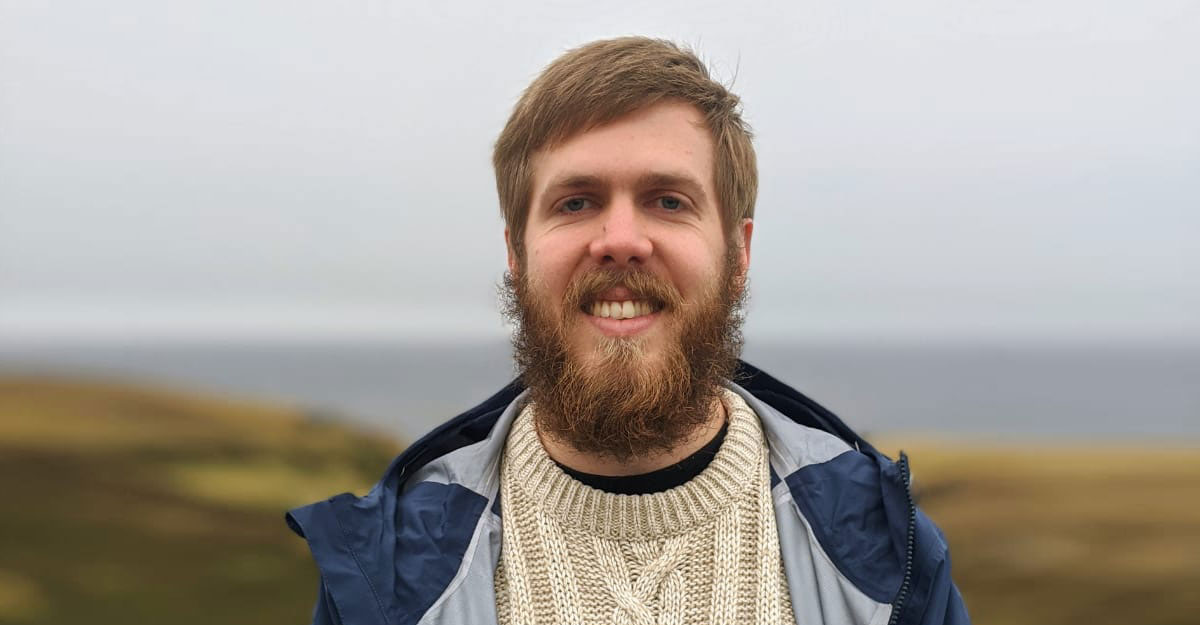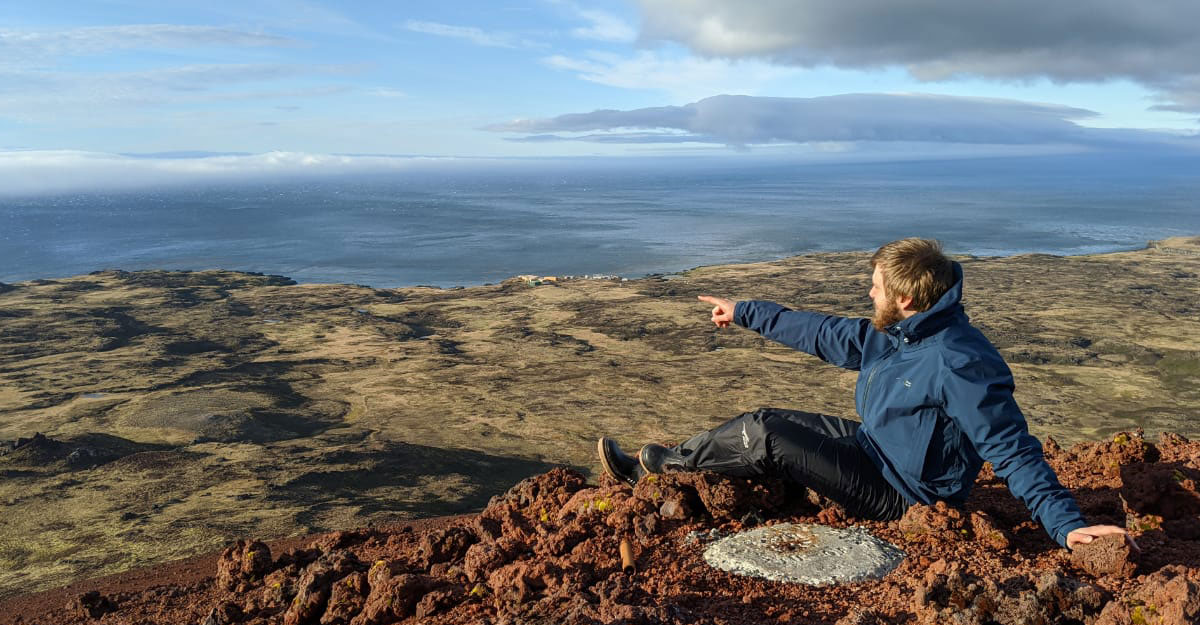
22 Jul Social distancing on Marion Island
With only eight people currently on Marion Island, social distancing is a natural feature of the year-long 77th Marion Island Expedition.

Stephanus Schoeman enjoys one of the few windows of calm weather and blue skies Marion Island has to offer. IMAGE: SANSA.
As South Africa and the rest of the world struggled to get to grips with the COVID-19 pandemic, the Cape Agulhas II left for Marion Island on 21 April 2020.
Judy Beaumont, Deputy Director General at the Department of Environmental Affairs, put wind in the sails of the expedition with these words: “I want to send a special farewell to the five amazing Marion 77 expedition members who, for the first time in the history of the programme, are experiencing a different, unexpected and never-been-done-before kind of voyage. I’m equally grateful to your family, friends, and loved ones for allowing you to serve the nation even during these trying times.”
One of the five Marion Island first-timers is SANSA Space Weather Engineer Stephanus Schoeman. He will monitor and maintain systems, report on the status of different instruments, and develop new hardware and software to maximise efficiency, reliability and uptime of the systems.
“On the island we have a Global Navigation Satellite System (GNSS) scintillation receiver, magnetometer, Very Low Frequency (VLF) antenna with five different analytic systems, and a riometer,” he says.
Schoeman helped upgrade a tide gauge, which forms part of the International Tsunami Early Warning System. He also helped install a DORIS (Doppler Orbitography and Radiopositioning Integrated by Satellite) beacon, which helps satellites stay in orbit by compensating for loss of altitude due to atmospheric drag.
“When talking to previous Marion Islanders, I heard a lot about the crazy weather we would experience here,” he says. “It wasn’t until we had blue skies with no wind one day and then rain with howling wind, snow, mist and hail on another that I realised just how crazy the weather can really get here!”
The expedition team at the remote Marion Island has also had to deal with COVID-19 restrictions, such as not being allowed to walk around the island. “The splendid beauty of the island, its magnificent wildlife and the adventure of it all more than makes up for this. The most difficult part of doing expeditions like this is of course being away from family and friends for such a long time,” says Schoeman.
The other thing that “takes a bit of getting used to” is a lack of fresh fruit and vegetables, he says, but the team has plenty of food, recreation facilities and other comforts. The expedition will return home in May 2021, perhaps to a very different “new normal” in the face of the COVID-19 pandemic.

It is easy to practice social distancing on Marion Island with only eight people on the whole island. IMAGE: SANSA.



